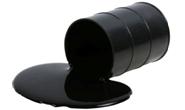Analysis

May 27, 2014
TransCanada Resorting to Rail to Keep Keystone XL Alive
Written by Sandy Williams
The Keystone XL project continues to be beset by delays as court disputes in Nebraska prolong presidential approval. A decision by the administration was put off “indefinitely” in April and now is likely to be delayed until after November elections.
TransCanada President Russ Girling recently stressed the company is not giving up on the pipeline project and is considering using rail tankers to transport oil from the northern section of the pipeline to the completed section in the Southern US.
“TransCanada is not walking away from anything,” said Girling in an interview with The Canadian Press. “As long as our customers are there, then TransCanada is going to be there … We need a bridge between now and when we can build a pipeline … We use the word bridge, and by bridge we mean it just bridges us to the point in time in which you put in the pipeline.”
A TransCanada spokesperson told SMU, “We are looking at how to modify existing contracts with our customers to allow for rail shipments as we wait for US permits approving the construction of Keystone XL. Similar to other developments, rail loading and unloading facilities proximate to our existing infrastructure or our planned infrastructure would be required.”
The company is looking into customer suggestions that TransCanada build a rail-loading facility in Hardisty, Alberta and a location in the US to off-load oil back into the pipeline.
According to TransCanada, a typical unit train can move approximately 100,000 barrels per day. The Keystone Pipeline is designed to ship 830,000 barrels daily.The early goal, said Girling, would be to ship by rail approximately half of that amount. A spokesperson for TransCanada said, “It is too early to know what it will cost or what all will be involved.”
“From our perspective, we don’t make a whole bunch of money doing this…Most of the money is spent on rail movement, which goes to the rail companies and things like that,” said Girling in the Canadian Press interview.
The measure is considered a temporary solution until construction of the northern US section of the Keystone XL can be completed.







